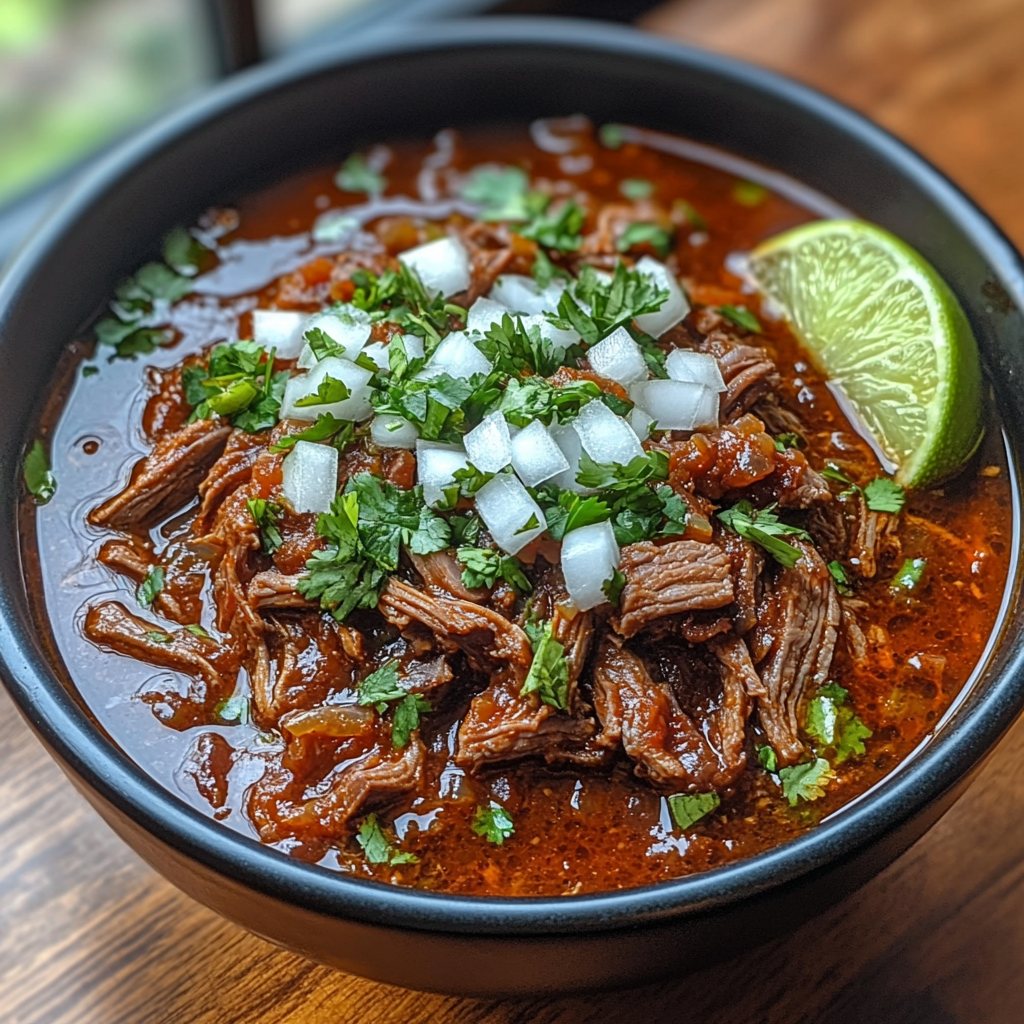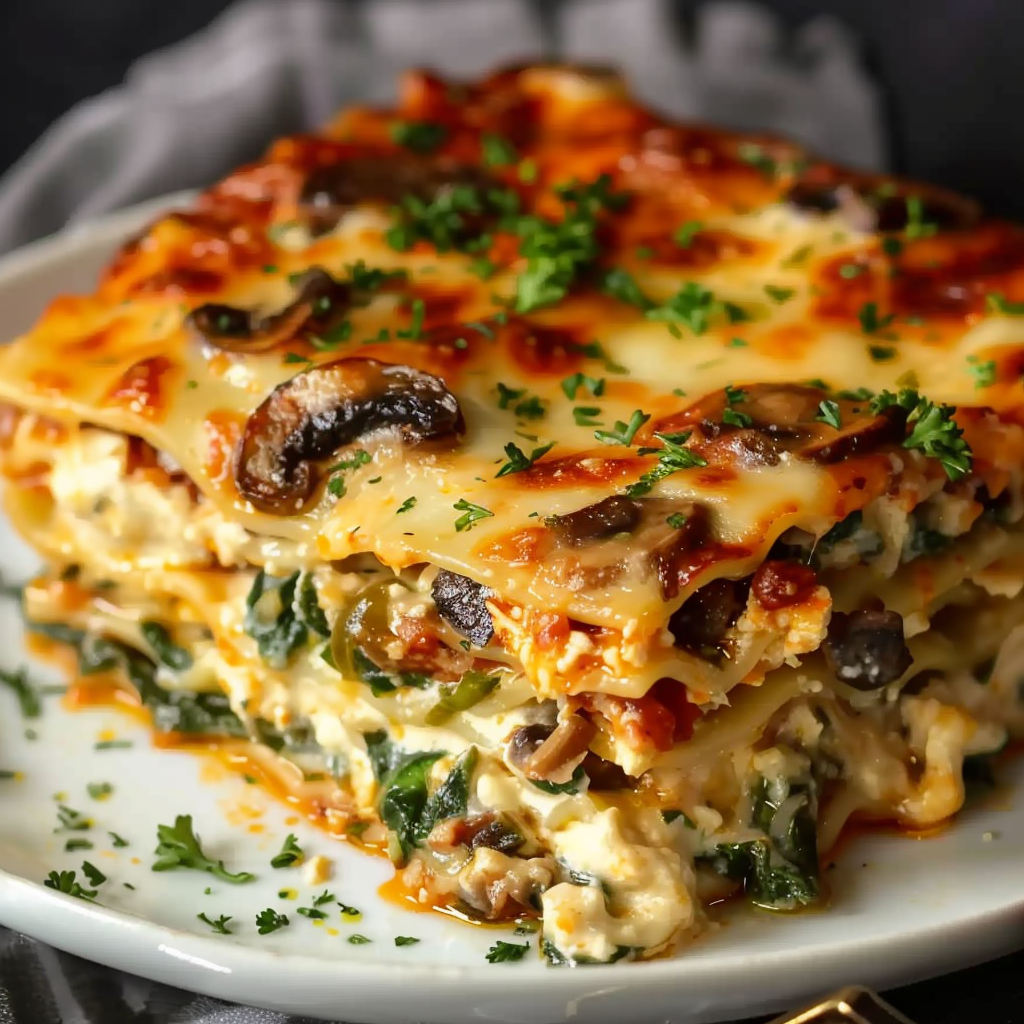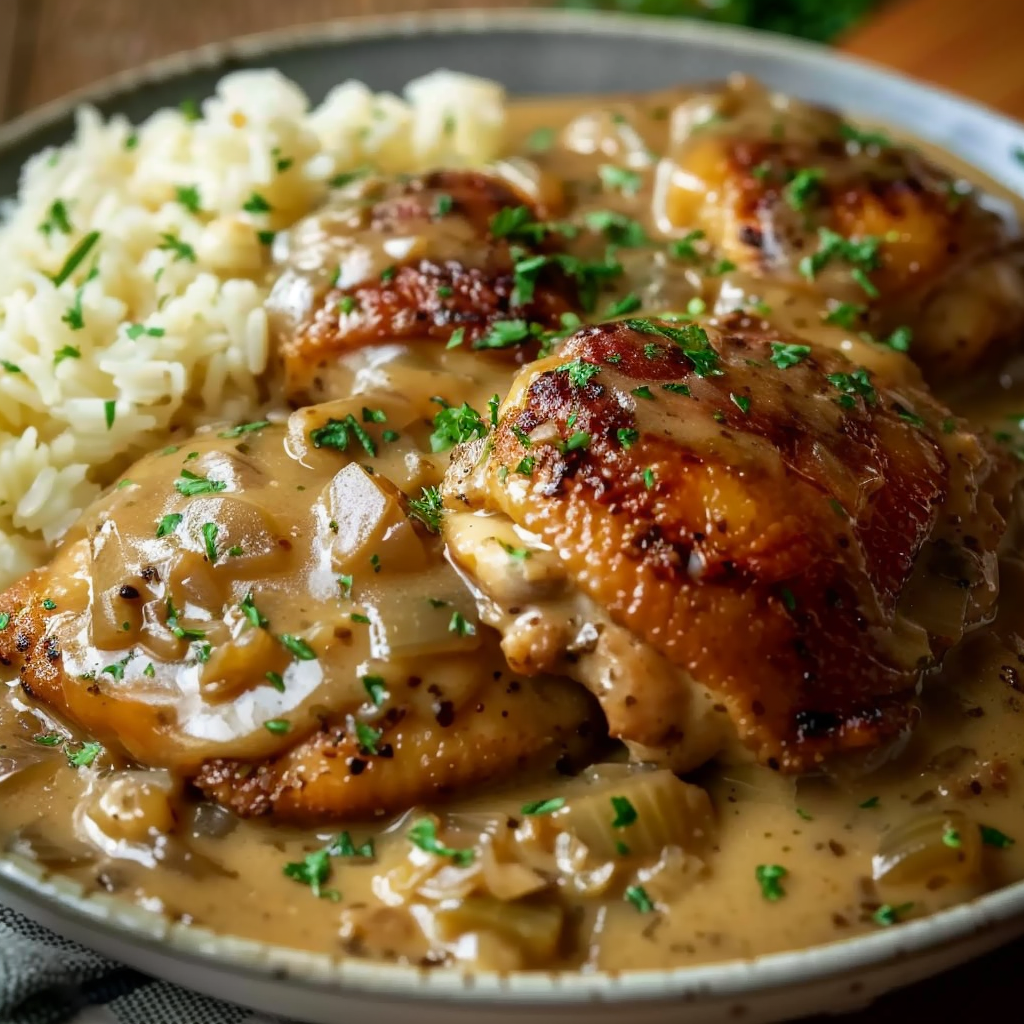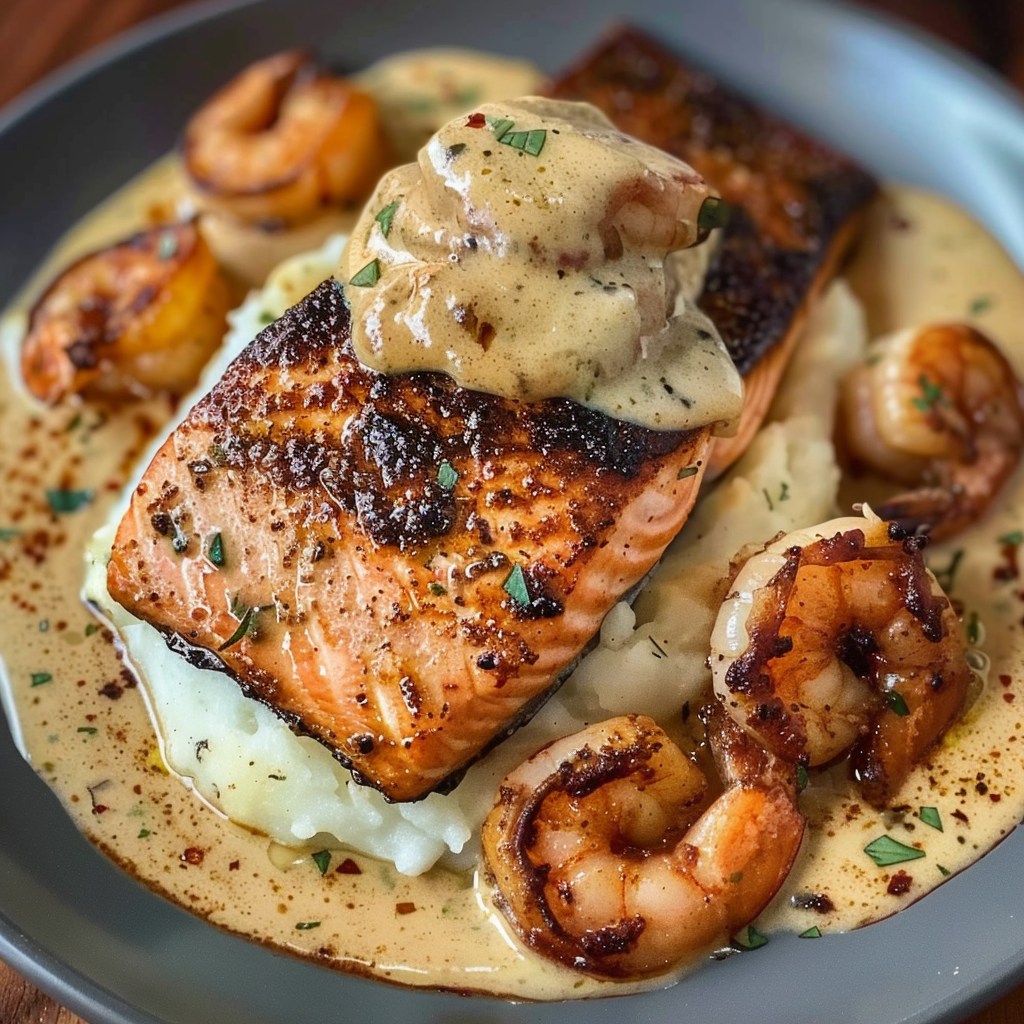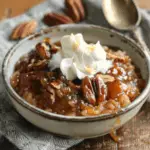Birria is a cherished dish originating from the state of Jalisco, Mexico. Traditionally made with goat meat, this slow-cooked stew has deep roots in Mexican cuisine and is closely tied to the celebrations and festivals of the region. The word “birria” itself translates to “worthless” or “mess,” a reference to its humble origins as a dish created during difficult times when families made use of less-desirable cuts of meat. Over time, however, birria has grown into a culinary treasure, becoming a favorite in Mexican households and taquerias across the country. While it was once primarily made with goat, it has evolved to include beef, lamb, or even pork, adapting to different regions and tastes.
Birria’s cultural significance extends beyond its flavors; it’s a symbol of Mexican community and celebration. Traditionally, it’s served during weddings, baptisms, and special holidays, with family recipes being passed down through generations. In recent years, Birria has gained immense popularity internationally, particularly in the U.S., where it’s been featured in tacos, quesadillas, and even ramen bowls.
Different Types of Birria (Goat, Beef, etc.), Focusing on Beef Birria
While birria was originally made with goat meat, the dish has adapted over time to include various types of protein, based on regional availability and personal preferences. The different variations include:
- Goat Birria (Birria de Chivo): The traditional version, with a distinct, slightly gamey flavor.
- Lamb Birria: Offers a milder, richer taste compared to goat.
- Beef Birria (Birria de Res): A popular alternative, especially in urban areas and internationally, where beef is more widely available than goat. It is known for its tender, juicy texture and the ability to soak up the spices and rich sauce.
For this recipe, we focus on Beef Birria (Birria de Res), which has become a preferred choice for many home cooks due to the accessibility and flavor profile of beef. Beef offers a heartiness that pairs perfectly with the complex spices and chiles used in the traditional sauce, making it ideal for slow cooking, where the meat can fully absorb the rich flavors.
Why Slow Cooker Birria?
Benefits of Using a Slow Cooker for This Recipe
The slow cooker is a modern adaptation for cooking Birria that preserves the essence of this traditional dish while making it more convenient for home cooks. Slow cooking mimics the time-intensive, low-and-slow process of cooking birria that was once done over an open fire or in a clay pot (often referred to as a comal or olla de barro in Mexican kitchens). The use of a slow cooker offers several key benefits:
- Hands-Off Cooking: Once the ingredients are prepared and the meat is in the pot, the slow cooker does all the work, allowing you to focus on other tasks while your dish cooks to perfection.
- Enhanced Flavor Development: The slow cooking process allows the beef to absorb all the complex flavors of the spices and chiles, resulting in a deeply aromatic and rich dish. This extended cooking time also tenderizes the meat, making it easy to shred and infuse with the sauce.
- Moisture Retention: Slow cooking helps retain moisture, which is especially important for tougher cuts of meat like chuck roast. The meat becomes incredibly juicy, soaking up the birria sauce and becoming more flavorful as it cooks.
How the Slow Cooker Enhances Flavor and Tenderness
Slow cooking is ideal for recipes like birria because it allows the collagen in the meat to break down over time, transforming tougher cuts into melt-in-your-mouth pieces of beef. The low, consistent heat provided by a slow cooker ensures that the meat cooks evenly and maintains its tenderness. Additionally, the sealed environment of the slow cooker traps moisture, keeping the meat from drying out while allowing the flavors of the sauce to intensify as it cooks.
The longer the meat sits in the birria sauce, the more it absorbs the deep, earthy flavors from the chiles and spices, resulting in a rich and satisfying dish. This makes the slow cooker version of birria an excellent option for home cooks seeking the authentic taste of birria without needing to tend to the pot constantly.
Ingredients Overview
Breakdown of the Essential Ingredients
Birria’s complex flavor comes from a rich combination of spices, herbs, and chiles. The ingredients are carefully chosen to balance heat, sweetness, and earthiness, providing depth to the dish. Here’s a breakdown of the key ingredients used in the recipe:
- Beef Chuck Roast: A tough cut of meat that becomes tender and juicy when slow-cooked. It’s ideal for birria because it soaks up the flavors while maintaining a hearty texture.
- Guajillo Chiles: Mildly spicy with a slightly fruity flavor, guajillo chiles form the base of the birria sauce, offering a subtle sweetness to balance the dish’s heat.
- Ancho Chiles: These dried poblano peppers add a deep, smoky flavor with mild heat. They bring a unique earthiness that complements the richness of the beef.
- Arbol Chiles: Small but potent, arbol chiles pack significant heat. They give the sauce its signature spiciness without overwhelming the other flavors.
- Roma Tomatoes: These add a layer of acidity and sweetness to the sauce, balancing the richness of the beef and the heat from the chiles.
- White Onion and Garlic: Essential aromatics that add depth to the sauce and round out the flavors.
- Spices:
- Cumin: Adds a warm, earthy flavor that pairs well with the chiles and meat.
- Mexican Oregano: Different from Mediterranean oregano, Mexican oregano has a slightly citrusy and more robust flavor that complements the spices and chiles in the dish.
- Ground Cloves: Contribute a warm, sweet undertone that enhances the savory richness of the birria sauce.
- Cinnamon and Ginger: These spices bring warmth and subtle sweetness, balancing the savory and spicy elements of the dish.
- Apple Cider Vinegar: Adds acidity to the sauce, which helps to brighten the flavors and cut through the richness of the meat and chiles.
- Bay Leaves: Infuse the birria with a subtle herbal flavor as it cooks, adding to the complexity of the dish.
Explanation of the Unique Flavors in the Dish (Chili Types, Spices, Etc.)
The combination of chiles and spices in Birria creates a symphony of flavors that make this dish truly special. Each type of chile contributes a different element:
- Guajillo chiles provide a fruity sweetness and mild heat, acting as the foundation for the sauce.
- Ancho chiles add smokiness and depth, rounding out the earthy flavors.
- Arbol chiles deliver the heat, giving birria its signature kick. Adjusting the amount of arbol chiles can control the spiciness of the dish, making it customizable for different heat preferences.
The spices (cumin, cloves, cinnamon, and ginger) work together to enhance the savory, sweet, and spicy notes of the dish. The result is a rich, well-rounded flavor profile where the boldness of the chiles is tempered by the warmth of the spices and the acidity of the tomatoes and vinegar.
The balance between the ingredients allows birria to offer a complex and satisfying flavor experience, perfect for the slow-cooking method where these elements have time to meld together into a harmonious, flavorful stew.
Step-by-Step Instructions
Preparing the Chiles (Deseeding and Rinsing)
Birria’s rich and complex sauce begins with a trio of dried chiles: guajillo, ancho, and arbol chiles. These chiles impart a unique combination of smokiness, sweetness, and heat to the dish, but it’s crucial to properly prepare them to ensure the best flavor.
Why Deseeding the Chiles is Important
Deseeding the chiles helps reduce bitterness and ensures the sauce has a smooth, consistent texture. While the seeds contain some heat, they can also make the sauce grainy and slightly bitter if left in. By removing the seeds, you get a purer flavor from the chiles, focusing on their fruity, smoky, and spicy notes rather than overwhelming heat.
How to Deseed and Rinse the Chiles
To prepare the chiles:
- Lay the dried chiles flat on a cutting board.
- Using kitchen scissors or a sharp knife, cut off the stems at the top.
- Slice the chiles open lengthwise to expose the seeds.
- Shake out the seeds and scrape the inner ribs to remove any remaining seeds.
- Give the deseeded chiles a quick rinse under cold water to remove any residual dirt or dust.
Tools You’ll Need:
- Kitchen scissors or a sharp knife
- Cutting board
- Fine-mesh sieve (for rinsing)
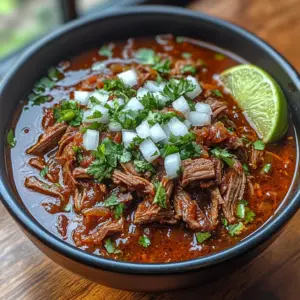
Simmering the Chiles
After the chiles have been deseeded and rinsed, the next step is to soften them through simmering. This step is crucial because softened chiles blend more easily into a smooth sauce, which is essential for the texture of birria.
Why Simmering is Necessary
Simmering rehydrates the dried chiles, allowing their flavors to bloom. By cooking them in water for a short period, you not only soften them but also release their essential oils, which enhance the depth of the sauce.
Time and Temperature Guidelines
- Place the prepared chiles in a medium-sized pot.
- Cover them with water (make sure they are fully submerged).
- Bring the water to a gentle simmer over medium heat.
- Let the chiles simmer for about 10 to 15 minutes, or until they are soft and pliable.
- Remove the pot from heat and let the chiles cool slightly before blending.
Potential Substitutions
If you can’t find specific types of chiles:
- Guajillo can be replaced with New Mexico or pasilla chiles.
- Ancho can be substituted with mulato chiles.
- If you want a milder version, reduce or omit the arbol chiles and add more guajillo or ancho to maintain the flavor without the heat.
Roasting the Vegetables
Roasting the vegetables—tomatoes, onion, and garlic—adds a layer of smokiness and sweetness that enhances the overall flavor of the birria sauce.
The Significance of Roasting
Roasting caramelizes the natural sugars in the vegetables, deepening their flavor. The charred bits bring an earthy smokiness that complements the chiles and spices, adding complexity to the sauce.
Step-by-Step Guide for Broiling Vegetables
- Preheat your broiler.
- Place the tomatoes, onion quarters, and unpeeled garlic cloves on a baking sheet. Arrange them in a single layer for even roasting.
- Broil for 4 to 6 minutes, turning once halfway through, until the vegetables are lightly charred on all sides.
- Remove the garlic from its peel once cooled, and set everything aside.
Alternative Roasting Methods
- Oven Roasting: If you don’t have a broiler, roast the vegetables in the oven at 400°F (200°C) for 10 to 15 minutes, turning once halfway.
- Stovetop Method: You can also char the vegetables in a hot skillet or griddle over medium-high heat if a broiler or oven isn’t available.
Making the Birria Sauce
The next step is creating the birria sauce by blending the simmered chiles and roasted vegetables with spices, broth, and vinegar.
Using a High-Powered Blender
- Transfer the softened chiles to a high-powered blender, along with 1 cup of the water they simmered in.
- Add the roasted tomatoes, onion, and peeled garlic to the blender.
- Add the following to the blender: beef broth, apple cider vinegar, cumin, Mexican oregano, ground cloves, ground cinnamon, and ground ginger.
- Blend on high for 1 to 2 minutes, until the sauce is completely smooth.
Why This Combination of Ingredients Works
The combination of chiles, roasted vegetables, and spices creates a deep, flavorful sauce. The chiles provide smokiness and heat, the roasted vegetables add sweetness, and the spices (like cumin and cloves) give warmth and complexity. The vinegar brightens the sauce and balances the richness of the beef.
Adjusting Consistency
- Too Thick: Add more broth or water to thin the sauce to your preferred consistency.
- Too Thin: Simmer the sauce on the stove for a few minutes to reduce and thicken it.
Slow Cooking the Beef
Now that the sauce is ready, it’s time to cook the beef. Slow cooking is ideal for tough cuts like beef chuck roast because it allows the meat to break down and become tender.
Preparing the Beef
- Cut the beef chuck roast into 3-inch chunks for even cooking.
- Season the beef generously with salt and pepper.
Cooking Times
- Low Setting: Cook the beef on low for 8 to 9 hours. This method allows the meat to break down slowly, resulting in incredibly tender, flavorful meat.
- High Setting: If you’re short on time, cook on high for 4 to 5 hours. The beef will still be tender, though the flavors won’t be as deep as the low-and-slow method.
Why Slow Cooking is Essential
Slow cooking allows the collagen in the beef to break down over time, resulting in meat that is juicy and tender. The beef absorbs the rich birria sauce as it cooks, becoming infused with the flavors of the chiles and spices.
Shredding and Combining the Beef with the Sauce
Once the beef has cooked to the point of falling apart, it’s time to shred it and combine it with the sauce.
Techniques for Shredding Beef Easily
- Remove the beef from the slow cooker and transfer it to a cutting board.
- Use two forks to gently pull apart the beef into shredded pieces.
- Discard any large pieces of fat.
Why Letting the Beef Absorb the Consommé is Crucial
After shredding, return the beef to the slow cooker and mix it back into the sauce. Let it sit in the sauce for an additional 30 minutes (or longer) on the “warm” setting, allowing the meat to fully absorb the consommé. This step ensures that the flavors meld together, making each bite rich and flavorful.
Serving Suggestions and Garnishing
Birria is incredibly versatile, and there are many ways to serve it:
How to Serve Birria
- As a stew: Serve the shredded beef in bowls with the consommé (the rich broth left from cooking).
- Tacos: Fill warm corn tortillas with the shredded beef, dip them in the consommé, and serve with extra consommé on the side for dipping.
- Quesabirria: Add cheese to the tacos to create a rich, cheesy variation.
Suggested Toppings
- Chopped onion
- Fresh cilantro
- Lime wedges
- Sliced radishes for crunch (optional)
These toppings add brightness and freshness to balance the richness of the beef and consommé, making for a perfect, well-rounded meal.
Tips, Variations, and Storage
Cooking Tips for Perfect Birria
How to Avoid Common Mistakes
- Overcooking: Overcooking birria, especially in a slow cooker, can cause the meat to become dry, even though it’s cooking in liquid. To avoid this, keep a close eye on the meat’s texture after the recommended cooking time (8-9 hours on low or 4-5 hours on high). The meat should easily shred but still be moist.
- Underspicing: Birria relies on a complex combination of chiles and spices. If you’re worried about the heat level, focus on reducing the number of arbol chiles rather than reducing the quantity of all the spices, which could lead to a less flavorful dish. Taste the sauce before slow cooking, and adjust seasoning as needed.
Tips for Using Other Types of Meat
Birria is versatile, and you can substitute different meats based on preference or availability:
- Goat or Lamb: Both of these meats are traditional in Mexican birria. Goat has a more gamey flavor, while lamb is milder. Cook times will be similar to beef (8-9 hours on low). To balance the gamey flavor, consider adding a bit more acid (such as vinegar or lime juice).
- Pork: Pork shoulder or pork butt can be used instead of beef, and the cooking times are roughly the same. Pork will yield a richer and slightly sweeter flavor.
Recipe Variations
Modifying the Spice Levels
To adjust the heat level of your birria:
- For milder birria, reduce the number of arbol chiles or omit them entirely. You can also increase the amount of guajillo or ancho chiles for their flavor without adding extra heat.
- For spicier birria, increase the number of arbol chiles or add a hotter variety of chiles like chipotle or cascabel.
Different Ways to Serve
- Birria Tacos: Use the shredded beef as a filling for tacos. Fry the tacos in a bit of oil until crispy and serve with consommé for dipping.
- Quesabirria: Add cheese to the tacos to create a rich, cheesy version of birria tacos, known as quesabirria.
- Birria Ramen: Add the shredded beef and consommé to a bowl of ramen noodles for a fusion take on the dish.
Using a Pressure Cooker
A pressure cooker is a great alternative to slow cooking. To make birria in a pressure cooker:
- Follow the same preparation steps.
- Set the pressure cooker to high pressure for 45-50 minutes. Allow the pressure to release naturally for 15-20 minutes before opening the lid. This method saves time while still delivering tender meat and a flavorful sauce.
Storage and Reheating
Best Practices for Storing Birria Leftovers
- Refrigeration: Store the leftover birria in an airtight container in the refrigerator. It will keep for 3-4 days. For the best results, store the meat and consommé separately, as this prevents the meat from absorbing too much liquid and becoming mushy.
- Freezing: Birria freezes very well. To freeze, portion the meat and consommé into airtight containers or freezer-safe bags, leaving some space at the top to allow for expansion. Birria can be frozen for up to 3 months.
How to Reheat the Dish Without Losing Flavor and Moisture
- Stovetop: Reheat the birria on the stovetop over medium-low heat. Add a splash of water or beef broth if needed to keep the meat moist.
- Microwave: Heat in the microwave in short intervals, stirring occasionally to ensure even heating and prevent the meat from drying out.
Freezing the Birria for Later Use
- To thaw, transfer the birria to the refrigerator overnight, then reheat using your preferred method. You can also reheat directly from frozen on the stovetop, though it will take longer.
Nutritional Information and Health Benefits
Nutritional Breakdown
Birria is a nutrient-dense dish, offering a balance of protein, fats, and carbohydrates. A typical serving (about 1 cup of shredded beef with consommé) contains approximately:
- Calories: 300-350 kcal
- Protein: 25-30 grams
- Fat: 15-20 grams (mostly from the beef)
- Carbohydrates: 5-10 grams (from chiles and vegetables)
The nutrient content is heavily influenced by the quality of ingredients, particularly the beef, which provides significant protein and fats. The chiles contribute vitamins A and C, while the broth adds additional nutrients, especially if it’s homemade or a low-sodium variety.
Health Benefits of the Ingredients
Low-Sodium Broth: Using a low-sodium broth reduces overall salt intake, which is beneficial for heart health and helps maintain healthy blood pressure levels.
Chiles: Chiles are rich in vitamins A and C, which support immune function and skin health. They also contain capsaicin, a compound that has antioxidant properties and may boost metabolism and reduce inflammation.
Beef: When consumed in moderation, beef is an excellent source of high-quality protein, which is crucial for muscle repair and growth. It is also rich in iron, especially heme iron, which is more easily absorbed by the body compared to plant-based sources, supporting energy levels and preventing anemia.
Frequently Asked Questions
What is the best meat cut for making beef Birria?
The best cut for beef birria is beef chuck roast. This cut is preferred due to its balance of fat and connective tissue, which breaks down beautifully during slow cooking, resulting in tender, flavorful meat that easily shreds. Chuck roast also absorbs the rich birria sauce well, enhancing the overall flavor.
Can I make this recipe in an Instant Pot or pressure cooker?
Yes, birria can be made in a pressure cooker. Simply follow the same preparation steps, and cook the beef at high pressure for about 45-50 minutes, followed by a natural release for 15-20 minutes. This method shortens cooking time while still delivering tender, flavorful meat.
Can I make Birria without a slow cooker?
Yes, you can make birria using a stovetop or oven. For stovetop, simmer the beef in a heavy pot over low heat for 4-5 hours. In the oven, cook in a covered pot at 325°F (160°C) for 4-5 hours, until the meat is tender.
What can I serve with Birria?
Birria can be served as tacos, with the consommé for dipping, over rice, with tortillas, or simply as a hearty stew.
How spicy is this recipe?
The heat level can vary depending on the chiles used. Guajillo and ancho chiles provide mild heat, while arbol chiles add significant spiciness. You can adjust the number of arbol chiles for desired heat.
Can I freeze Birria?
Yes, birria freezes well. Store it in an airtight container for up to 3 months. Thaw overnight in the fridge and reheat on the stovetop or microwave.
Conclusion
Slow Cooker Beef Birria is a flavorful and versatile dish that showcases the rich traditions of Mexican cuisine with the convenience of modern cooking methods. The slow cooker simplifies the process, making it easy to prepare a deeply aromatic and tender meal without constant attention. Whether served as tacos, stew, or quesabirria, the dish is adaptable to personal tastes, with customizable heat levels and serving options. With its robust flavors and satisfying texture, birria is a rewarding recipe to try at home, and encourages creativity in the kitchen as you experiment with different ingredients and variations.
Print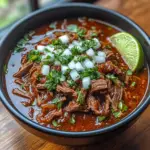
Birria (Slow Cooker)
Description
This Slow Cooker Beef Birria is a flavorful Mexican stew traditionally made with a rich blend of dried chiles, aromatic spices, and tender beef. The slow cooker makes this recipe incredibly easy, allowing the beef to simmer in the sauce until it’s melt-in-your-mouth tender. Perfect for making birria tacos, quesabirria, or serving as a stew, this recipe delivers authentic taste with minimal effort. Whether you’re preparing it for a family gathering or a cozy weeknight meal, this birria recipe is sure to impress.
Ingredients
Beef Birria (Birria de Res)
- 4 pounds beef chuck roast, cut into 3-inch chunks
Birria Sauce
- 10 guajillo chiles
- 5 ancho chiles
- 3 arbol chiles (reduce for less heat)
- 2 Roma tomatoes
- 1 white onion, quartered
- 6 garlic cloves, unpeeled
- 2 cups low-sodium beef broth
- 2 tablespoons apple cider vinegar
- 2 teaspoons kosher salt
- 1 teaspoon ground black pepper
- 1 teaspoon ground cumin
- 1 teaspoon dried Mexican oregano
- ½ teaspoon ground cloves
- ½ teaspoon ground cinnamon
- ¼ teaspoon ground ginger
- 3 bay leaves
Optional for Serving
- Chopped onion
- Fresh cilantro
- Lime wedges
Instructions
- Prepare the Chiles:
- Remove the stems and deseed the guajillo, ancho, and arbol chiles. Rinse them to remove any dust.
- Simmer the Chiles:
- In a medium pot, add the chiles and cover with water. Simmer over medium heat for 15 minutes until softened.
- Roast the Vegetables:
- While the chiles simmer, place the tomatoes, onion, and garlic on a baking sheet. Broil for 4-6 minutes until lightly charred.
- Make the Sauce:
- Transfer the softened chiles and 1 cup of the simmering water to a blender. Peel the garlic, then add it along with the roasted tomatoes, onion, beef broth, vinegar, cumin, oregano, cloves, cinnamon, and ginger. Blend until smooth.
- Slow Cook the Beef:
- Place the beef chunks in the slow cooker. Pour the birria sauce over the beef and add the bay leaves. Cook on low for 8-9 hours or on high for 4-5 hours, until the beef is tender and falls apart.
- Shred the Beef:
- Remove the bay leaves, then transfer the beef to a cutting board. Shred the meat using two forks.
- Combine the Meat and Sauce:
- Return the shredded beef to the slow cooker and stir it into the sauce. Let the meat absorb the flavors for an additional 30 minutes.
- Serve:
- Serve the birria as tacos with tortillas, as a stew with consommé, or use it to make quesabirria. Garnish with chopped onion, cilantro, and a squeeze of lime juice.
Notes
- Adjusting Heat: To reduce the heat, use fewer arbol chiles or omit them. For a spicier dish, you can increase the number of arbol chiles or add hotter varieties.
- Substitutions: If guajillo or ancho chiles are unavailable, you can substitute with New Mexico or pasilla chiles. These will still provide a deep, smoky flavor.
- Make-Ahead: Birria tastes even better the next day as the flavors continue to develop. This makes it a perfect recipe to prepare in advance.
- Serving Suggestions: This birria is perfect for making tacos, quesabirria (add cheese to the tacos), or serving as a stew with the consommé (broth). Pair it with Mexican rice, tortillas, or your favorite sides.
- Storage: Leftovers can be stored in an airtight container in the refrigerator for up to 4 days. Birria also freezes well for up to 3 months—just be sure to store the meat and consommé separately for the best texture when reheated.


